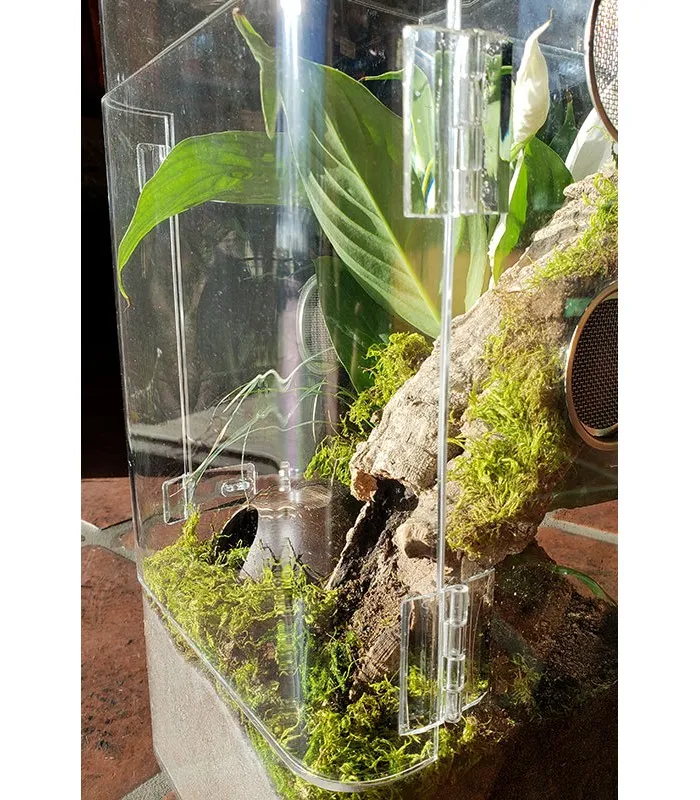Choosing the Right Tarantula Enclosure
Setting up the perfect tarantula enclosure is crucial for your pet’s health and happiness. A well-designed habitat mimics their natural environment, providing security, promoting natural behaviors, and making them feel at ease. Factors such as size, ventilation, substrate, and decor play a significant role in ensuring your tarantula thrives. Selecting the right enclosure involves understanding the specific needs of your tarantula species, as each species has unique requirements. This includes considering the tarantula’s size, whether it is terrestrial or arboreal, and its specific humidity and temperature needs. Proper planning from the beginning can prevent future problems and enhance your overall tarantula-keeping experience. It ensures that your tarantula has everything it needs to live a long and healthy life, allowing you to enjoy the fascinating world of these captivating creatures.
Enclosure Size and Tarantula Species
The size of the tarantula enclosure is probably one of the most important things when considering the needs of the tarantula. The enclosure should be proportional to the size of your tarantula. A habitat that’s too small can limit movement, hindering your tarantula’s ability to hunt or simply move around. Conversely, an enclosure that’s excessively large can make it difficult for the tarantula to find its food, and can also make them feel unsafe. The type of tarantula you have—whether it’s a fast-growing species or a more relaxed one—will also influence your enclosure choices. Moreover, consider the tarantula’s growth stage. Spiderlings will need a smaller, more secure environment to start. As they grow, you’ll need to upgrade to larger enclosures.
Small spiderlings
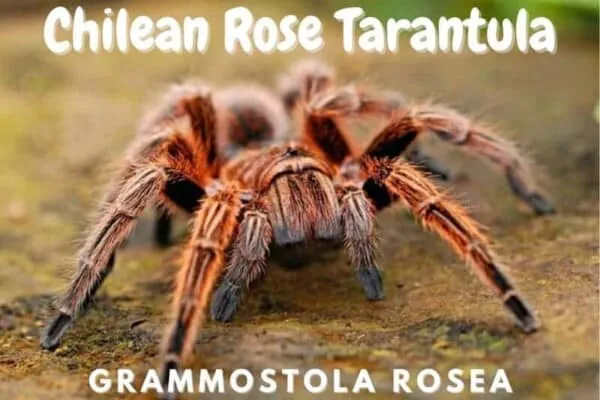
For small spiderlings, a small, secure enclosure is essential. Clear plastic containers or deli cups work well, allowing you to monitor the spiderling while maintaining the necessary humidity levels. Ensure the enclosure has proper ventilation with small air holes to prevent the buildup of moisture. Provide a small water source, like a bottle cap filled with water, and a hide, such as a small piece of cork bark, to help the spiderling feel secure. The small size also makes it easier to provide the required temperature gradients.
Adult terrestrial tarantulas
Adult terrestrial tarantulas need a habitat that offers a good floor space for roaming. A tank that is wider than it is tall is preferable, allowing them to explore and establish a territory. The enclosure should have a secure lid to prevent escape. A depth of substrate for burrowing is vital, especially for species that like to dig. Include a water dish, a hide, and some artificial or live plants for decoration and enrichment. Ensure that the size of the enclosure matches the adult size of the tarantula, offering adequate space for their growth.
Arboreal tarantulas
Arboreal tarantulas are adapted to living in trees, so their enclosures should be taller than they are wide. Vertical space is critical for climbing and exploring. A good arboreal enclosure includes vertical elements like cork bark or branches for climbing and hiding. It is equally crucial to provide adequate ventilation and humidity. These tarantulas prefer slightly different setups, which should always be considered when selecting the correct enclosure. Again, it is vital to ensure that the enclosure matches the adult size of your tarantula. This should always be considered when making the selection.
Substrate Selection and Setup
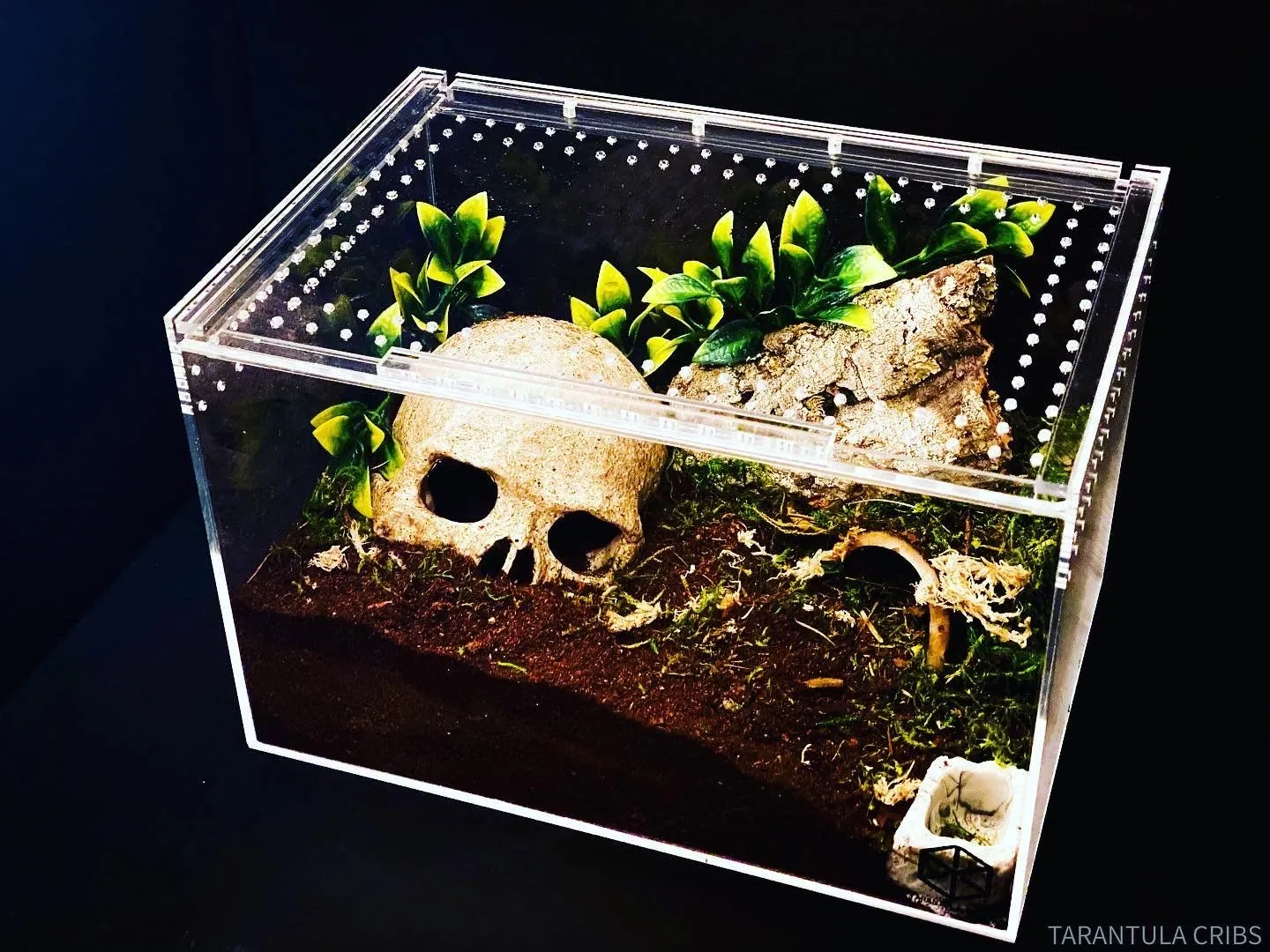
Substrate is the foundation of a healthy tarantula enclosure. It provides a surface for the tarantula to walk on, acts as a moisture regulator, and, in many cases, allows the tarantula to burrow. The substrate type will influence humidity levels, and the substrate will influence your cleaning schedule. Choosing the right substrate involves considering the species, its natural habitat, and the specific needs of your tarantula. It affects not only the tarantula’s physical health but also influences its psychological well-being by allowing them to express natural behaviors such as burrowing and hiding. When selecting a substrate, ensure that it is free of pesticides or other chemicals that could be harmful to your tarantula.
Types of Substrate and Their Benefits
Common substrate options include: coconut fiber, which retains moisture well and is ideal for species that like high humidity. Sphagnum moss, also good for moisture retention, and can be used to create humid microclimates. Peat moss, suitable for maintaining humidity but can be more acidic, so it’s important to monitor the enclosure. Potting soil, a cost-effective option, however, ensure it is free of fertilizer and pesticides. Vermiculite or perlite can be added to increase drainage. These substrates can also be mixed to achieve the best combination of moisture retention, drainage, and aesthetic appeal.
Creating Proper Humidity Levels
Humidity control is vital for the well-being of your tarantula. Too little humidity can cause molting problems, dehydration, and other health issues. Too much humidity can lead to mold and bacterial growth, which can be dangerous for the tarantula. Monitoring humidity levels is often achieved with a hygrometer, and maintaining the correct level is essential. Most species require humidity levels between 60% and 80%. You can increase humidity by misting the enclosure with water, especially on the substrate and the sides of the enclosure. Using a substrate that retains moisture well is another great way to maintain humidity. Good ventilation is equally essential, preventing mold growth. The combination of the right substrate and regular maintenance of humidity is key.
Ventilation and Airflow
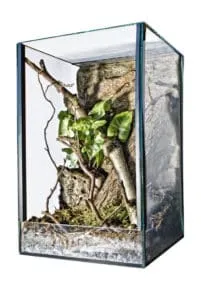
Proper ventilation is non-negotiable in tarantula enclosures, directly impacting the health of your pet. Good airflow prevents the build-up of excess moisture, which can lead to mold growth, respiratory issues, and other dangerous conditions. Ensure that the enclosure has adequate ventilation, such as drilled holes or mesh tops, to allow fresh air to circulate and prevent stagnant air. The positioning of ventilation holes is crucial; place them on the sides and top of the enclosure. If the ventilation is insufficient, the enclosure can become a breeding ground for harmful bacteria and fungi. So, regular monitoring and maintenance are important to maintain a healthy environment.
Decorating the Tarantula Habitat
Decorating the tarantula habitat is essential for both the aesthetic appeal and the psychological well-being of your pet. Providing the right decor gives the tarantula opportunities to express natural behaviors and makes them feel secure in their environment. Adding appropriate decor also enhances the habitat’s aesthetic appeal, and there is a wide variety of decor options available. The decor should be both practical and aesthetically pleasing, offering enrichment. A well-decorated enclosure can make the tarantula more active and interesting to observe.
Hiding Places and Enrichment
Tarantulas are ambush predators and often feel safest when they have a place to hide. Providing hides is essential for their well-being. Cork bark, half logs, or even artificial caves work well. The hide should be appropriately sized for your tarantula, allowing it to fit comfortably inside. Enrichment can include things like artificial plants, which not only provide a hiding place but also improve humidity. Make sure any decor is stable and cannot fall or trap the tarantula, ensuring their safety in the enclosure.
Plants and Other Decorations
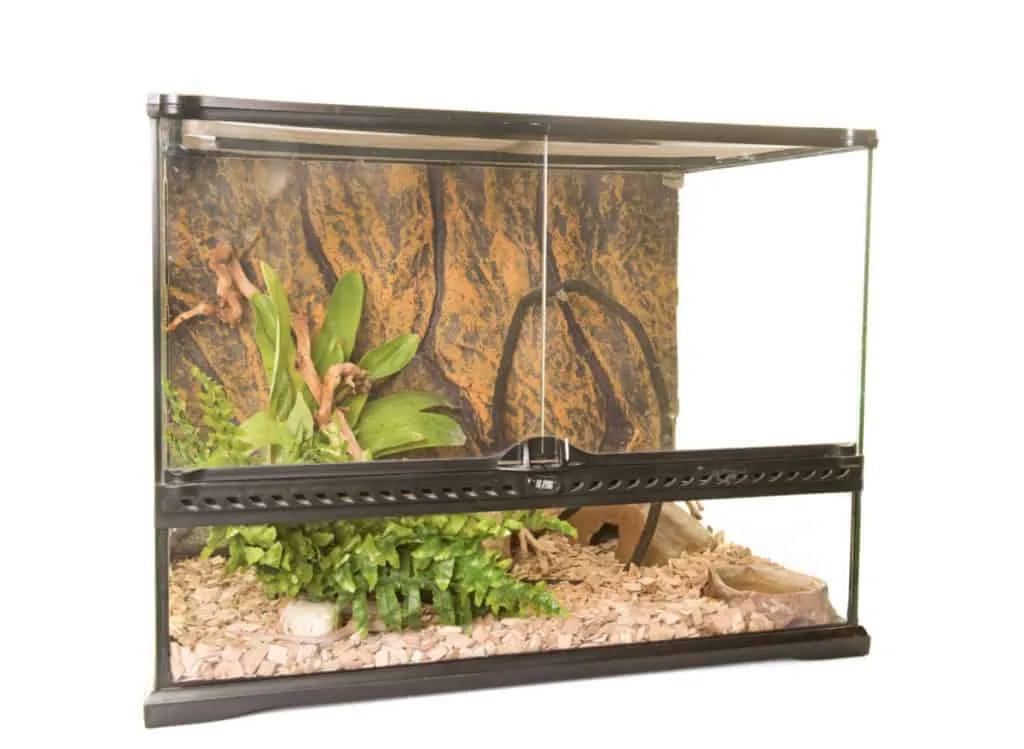
Adding plants and other decorations is a great way to create a more naturalistic and engaging environment for your tarantula. Live plants can help regulate humidity and add visual interest to the enclosure. Consider using hardy, non-toxic plants like pothos, snake plants, or small ferns. Artificial plants are also a good alternative. Other decorations can include smooth rocks, driftwood, or even small figurines. Make sure all decorations are clean and secure to prevent any hazards to the tarantula. Arrange the decor in a way that provides hiding spots, climbing opportunities, and a stimulating environment. Adding decorations will create a habitat that is not only visually appealing but also benefits the tarantula’s well-being.
Essential Equipment for Tarantula Enclosures
Setting up the right equipment is crucial for the health of your tarantula. The basic equipment needed includes a water dish, a hygrometer, a thermometer, and sometimes, a heat source. These tools help maintain a proper and secure environment. The quality of this equipment significantly affects the well-being of your pet, therefore, it’s best to invest in reliable items that suit the specific requirements of your species. Ensure the equipment is easy to clean and maintain to ensure the tarantula’s enclosure remains a safe and healthy habitat.
Water Dishes and Misting Bottles
A water dish is an important item in a tarantula enclosure. It provides a constant source of fresh water for hydration. The dish should be shallow to prevent drowning, especially for smaller tarantulas. Choose a dish that is stable and easy to clean. Misting bottles are used to increase humidity, especially for species that require a moist environment. Use a fine mist setting to avoid over-saturating the substrate. The regularity of misting depends on the humidity needs of the tarantula and the climate of your home. It is crucial to monitor humidity levels using a hygrometer to ensure you provide the right amount of moisture.
Heating and Lighting
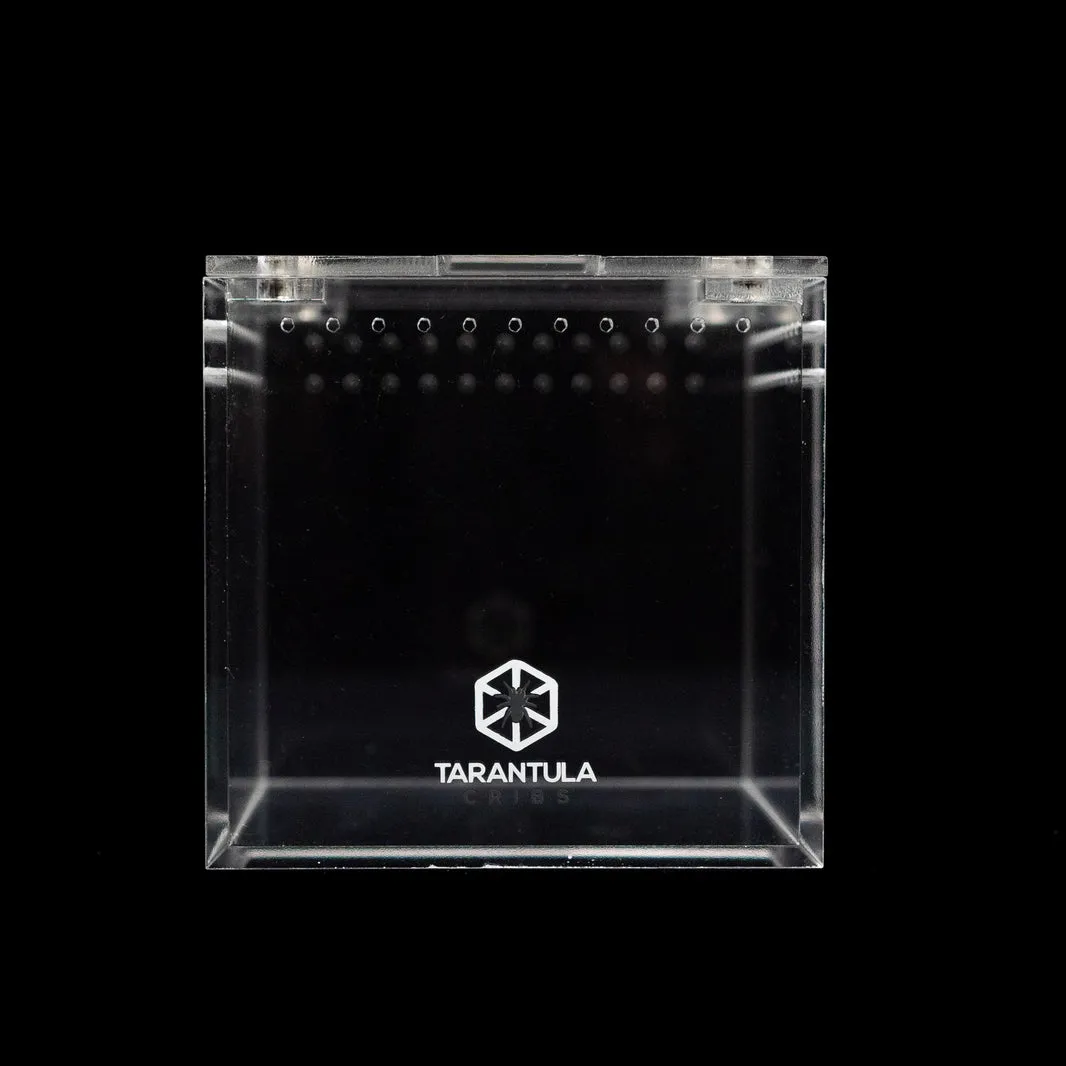
Most tarantulas do not need additional heating if your house is within a normal temperature range. However, some species from warmer climates might benefit from a low-wattage heat source, such as a heat mat or a ceramic heat emitter. Place the heat source on the side of the enclosure to create a temperature gradient, allowing the tarantula to regulate its body temperature. Never place the heat source directly under the enclosure, as this can overheat the substrate and harm the tarantula. Lighting is not always necessary, but a low-wattage LED light can be used to observe your tarantula. Avoid bright lights or direct sunlight, as these can stress your tarantula. Always consult care information for your specific species to understand their temperature and lighting needs.
Maintaining and Cleaning the Enclosure
Regular maintenance and cleaning is essential for your tarantula’s health. A clean enclosure reduces the risk of diseases and ensures your pet has a safe and healthy habitat. Your cleaning schedule should consider the specific needs of your tarantula species, the type of substrate used, and the overall health of the enclosure. Developing a consistent cleaning routine will help keep the enclosure in optimal condition, and will also prevent the buildup of bacteria and mold. Regular maintenance will also allow you to monitor your tarantula’s health and identify any potential problems early on. A clean environment promotes a happier, healthier tarantula.
Regular Cleaning Schedule
Establish a regular cleaning schedule based on the needs of your species. Spot clean the enclosure weekly by removing any uneaten food, dead insects, and other waste. Replace the water in the water dish regularly. For most substrates, complete substrate changes should happen every 6–12 months, depending on the substrate type and the tarantula’s behavior. When changing the substrate, clean the entire enclosure thoroughly with warm water and a mild soap, if necessary. Make sure to rinse well. Avoid using harsh chemicals. Observe your tarantula and enclosure closely and adjust your cleaning schedule as needed.
Dealing with Mold and Pests
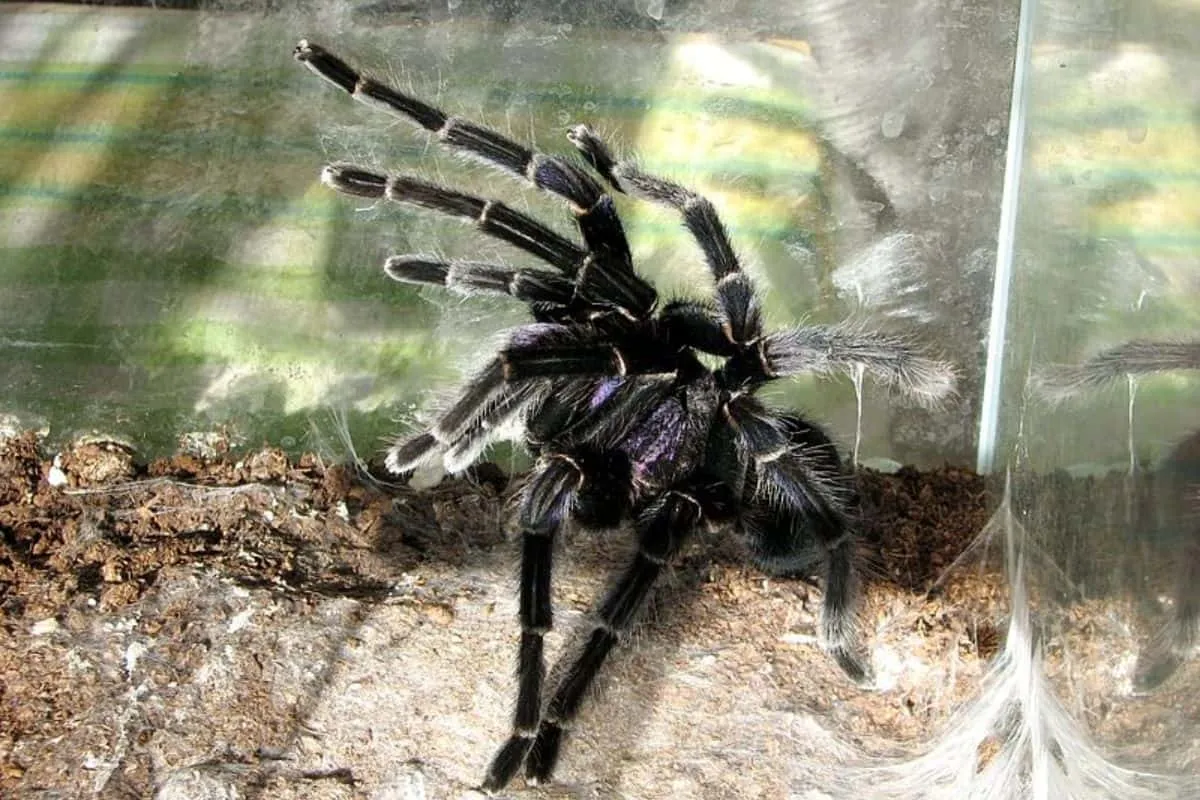
Mold and pests are common problems in tarantula enclosures. Prevent mold growth by ensuring adequate ventilation and avoiding over-misting. If you spot mold, remove the affected areas of substrate immediately and improve ventilation. Pests like mites can be controlled by maintaining a clean enclosure and quarantining new substrate or decorations before introducing them to the habitat. If you find mites, consider using a treatment such as introducing predatory mites, which feed on harmful mites. Always consult with a veterinarian or experienced tarantula keeper for advice. Maintaining the right humidity, proper ventilation, and regular cleaning are the best methods for preventing these issues. Regular monitoring of the enclosure can identify problems early.
Troubleshooting Common Enclosure Issues
Even with careful planning, problems can arise in your tarantula enclosure. Here are some steps to troubleshoot common issues. If your tarantula seems stressed or is not eating, ensure that the temperature and humidity levels are correct for the species. Check for any disturbances in the enclosure, such as loud noises or excessive handling. If your tarantula is burrowing excessively, it might be due to an unsuitable substrate or environmental stress. Make sure the substrate is deep enough and that you provide plenty of hiding places. If your tarantula is not eating, ensure the prey is the correct size and that the enclosure is not too cold or too warm. Remember, each tarantula has its own personality, so there may be occasional issues.
By consistently monitoring and making adjustments as necessary, you can create a healthy and safe home for your tarantula.
